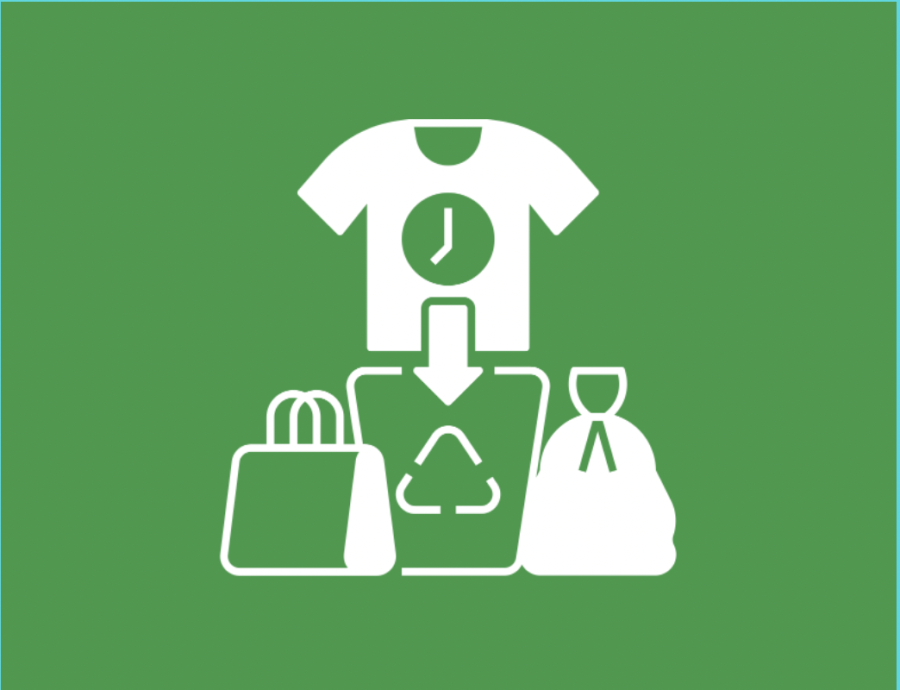How Can You Help? Fast Fashion and its Solutions
When you are picking out a new piece of clothing what do you think of? You probably wonder, is it on trend? Will other people like it? How much does it cost? The last thing you likely think of is the impact those purchases have.
The growth of the fashion industry has been exploited within the last decade due to the ability for companies to manufacture and sell from foreign countries, the internet, and recent quarantine boredom. With high demand, and new clothing trends nearly every month, the apparel industry has been swallowed by fast fashion.
Fast fashion is a manufacturing, design, and marketing method of rapidly producing and selling clothing for a small price. Fast fashion brands, such as Nike, H&M, and current fan favorites like Zara and Shein, mass produce many of their products at a cheap cost and quick rate. Their questionable business practices put the environment, as well as their laborers, in jeopardy.
Due to more and more hasty trends paired with exponentially dropping prices, buyers have consumed 60% more items of clothing now compared to 2000. In addition, such products are kept half as long for the same reasons which end up in landfills, contributing to negatively impacting the environment.
Ever think donating or recycling your clothes instead of throwing them out will help? Well, that might not be the best option since such items get packed, shipped, and sent overseas only for many of them to end up in landfills anyways. This monstrosity of cloth can sit in landfills around the world for 200+ years. As time passes, these items decompose and produce methane, contributing to global warming.
Every year 92 million tons of waste are produced by the fashion industry. That’s enough to fill the Boston Harbor twice! Since many fabrics contain plastic fibers like polyester, spandex, nylon, etc, microplastics are created from their fibers being broken down into wastewater when thrown out. This plastic filled water then seeps into the soil and becomes part of food chains. It’s estimated that 35% of the microplastics in the ocean come from the fashion industry.
However, not only are plants, animals, and the earth harmed by the materials of Fast Fashion, humans are too. Workers rights are limited in the places where the majority of the clothing factories are located, overseas. The companies are taking advantage of the poor populations whose only way to make a salary is through this ailing work.
Overseas, most workers are forced to work 14 to 16 hour days, 7 days a week to meet deadlines. As their wages are so low, working more hours actually appeals to them; they would also likely be fired if they refused the extra work.
Not only are their hours long, all the while they are breathing in toxins, inhaling dangerous fiber particles, and harmful sand, all while having no ventilation during their 96+ hour weeks.
Clothing brands like to assure us that their workers are getting paid a fair wage, however they are provided with the bare minimum to live a somewhat decent life. In some sweatshops, the conditions can go to an extreme of being involuntary child labor, forms of abuse, and sleep deperavation. What makes this ok? We need this to change. How can we make a change?
Well first and foremost, you can question your role. Many people are loyal to brands they know and love, and they will keep spending money on products with no further thought. But what if they looked further into fast fashion corporations, and really educated themselves on the issue?
They then can educate others and together they can impact the company’s abilities and minimize their success by reducing their sales. Such customers will then turn to other companies who treat their employees well. The same principle applies to companies that are not environmentally conscious and just care about their profits.
Since climate change is a hot button issue nowadays, many companies are thriving off implementing their sustainable ways. By going through small changes like turning off technology at night, printing on both sides of paper, and putting a larger focus on recycling all together, they are reducing their energy and waste consumption greatly. However, production is longer and is more pricey for such green businesses.
By supporting these companies, you can contribute to helping the environment and decreasing your own carbon footprint.
A more affordable option, however, is buying your clothes second hand through thrifting, on reselling websites and apps, and hand-me-downs. Thrift stores sell secondhand articles at a cheap price. By doing so you are not only making an eco-friendly choice, but it is also fun. I love going thrift shopping with my friends and I usually end up taking home a bunch of unique pieces.
Instead of throwing out your clothes, drop them off at a local thrift store or sell them online. If you want to purchase something specific from a fast fashion brand, look further on online sites like Ebay or Poshmark, because it’s likely you’ll find what you’re looking for or maybe even something better. You also don’t need to be shopping for new clothes every week, this isn’t grocery shopping! This are just a few ways to combat the never ending cycle of fast fashion.
